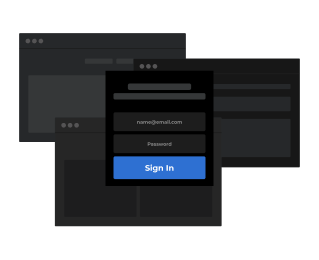

Thank you!
Just one more thing before you go...

Control Your Data, And Benefit From It Too
The growth of digital media and ecommerce has resulted in troves of consumer data that was previously unstructured and unavailable to businesses. Over the past several decades, retailers, advertisers, publishers, and marketers have utilized that data almost unchecked in service of the bottom line. However, consumers have a much greater concern today about the collection and usage of this personal data. In order to succeed, brands must modernize their marketing and data strategies in alignment with this shift in consumer behavior.
A recent DataGrail study found that 84% of people want to know which businesses are collecting their data and 77% want control of how that data is being used. Consumers are even adjusting their priorities such that a brand’s data practices and privacy policies are directly impacting their purchasing behavior. This same study found that 75% of Millennials, Gen X and Boomers would rather shop at a brand who is transparent about their privacy practices.
Retailers need to build trust with consumers by acting as responsible stewards of their data. While a targeted ad based off of a consumers’ prior online behavior may well lead to an increase in sales in the near-term; clear and consent-driven data practices will go further in building customer loyalty – creating a recurring revenue stream. Moreover, a misalignment between consumer expectations and actual data practices can create a PR nightmare with resounding impacts, as seen most recently with Sephora and Plaid.
8 out of 10 Americans think there should be a federal law protecting their personal data (DataGrail, 2022). Given the enactment of GDPR, CPRA, and CCPA, the ecommerce and advertising industries in particular, should be prepared for additional regulation. But there is no reason to wait. In the absence of legislation, consumers are taking matters into their own hands whenever possible. In fact, 87% of consumers have taken action to protect their online privacy, including deleting cookies or browsing history (56%), unsubscribing from email lists (51%), and using ad-blocker apps (32%) (DataGrail, 2022). Businesses who put consumers in control of their own data will build more confidence among their users and customers, and will prevent many of these negative behaviors.
When it’s done correctly, consumers are delighted by a personalized experience. It is the lack of consent and control in the current model that can lead to negative reactions from “personalization”. DataGrail highlights an interesting concept about zero-party data – or data that consumers intentionally and explicitly share with a business. Using zero-party data to create a personalized experience for consumers is accurate, transparent, and consent-driven.
Consumer awareness of shady data practices is at an all-time high. 75% of consumers are aware that companies sell data to third-parties, up from 62% just two years ago (DataGrail, 2022). We can only assume this number will continue to grow until this practice is reversed. So the bottom line is this – if consumers cannot transparently understand how their data is being used, control that usage, or have the ability to opt-out (and to have that opt-out actually be respected), brands will lose those consumers and that churn will ultimately have a significant revenue impact.
At lockr, we are building a mechanism for consumers to control their digital identity. Within our lockrMail platform, consumers have the ability to control any and all communication preferences from businesses, meaning they have a say when it comes to how those brands are communicating with them. But while we are serving the consumer, it is essential to us to preserve the relationship consumers have with their favorite brands, retailers, and businesses. So unlike our competitors who are simply looking for ways to circumvent tracking, advertising, email marketing, etc., we at lockr are looking for ways to strengthen the relationship that brands and publishers have with consumers. This is why we are partnering with publishers through our Identity lockr APIs which have benefits for the consumer (lockr SSO and consent management) but also significant benefits for brands and publishers, including a highly transparent consent opt-in to data sharing. Additionally, by working with lockr, brands can demonstrate that they care about consumer preferences and are supportive of tools like lockrMail that facilitate consumer control without inhibiting the revenue models of traditional media companies.
View the original article on LinkedIn.

Machine-Generated Email Cost Calculator
Unlock additional revenue by integrating with Identity lockr.
Select your industry vertical.
How many registered users or newsletter subscribers do you have?
Average monthly emails sent to each subscriber per month?
What is your average email open rate?Optional
What is your average email click rate?Optional
Has lockr previously analyzed the machine-generated emails in your first-party data?
What was the percentage?
Enter your RPM (page revenue per 1,000 sessions).
What is your average monthly subscriber growth rate?
What is your anonymous web visitors monthly pageview traffic?
What is your authenticated monthly pageview traffic?
Projected Incremental Revenue
Projected Annual MGE Overhead
| MGE Fees | $0 |
| MGE Lost Email Revenue | $0 |
| MGE Advertising Leakage | $0 |
| One month of Email Jail | $0 |
| Incremental Revenue | $0.0M |
Enter your email to receive the full report.
Are you sure you want to leave?
Changes you made will not be saved.







